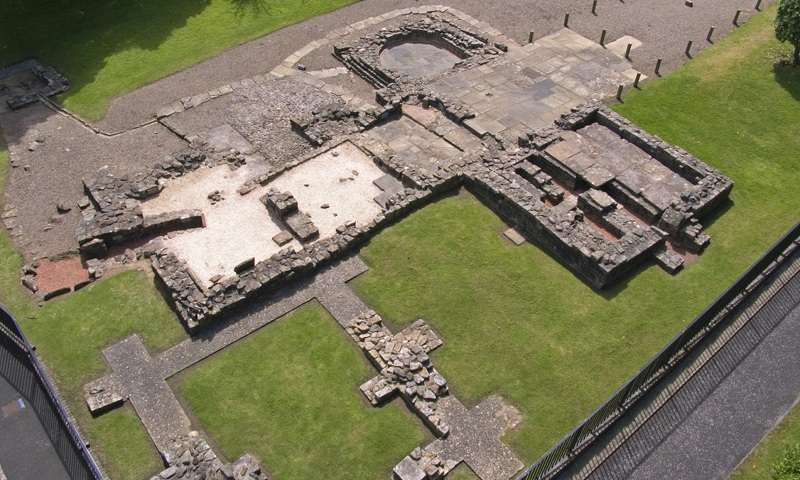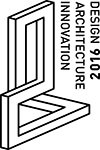The excavation of a large Roman fort in the 1970s in Bearsden has provided rare insight into how Roman soldiers coped with life in Scotland, nearly 2,000 years ago.
Following years of excavating and scientific analysis, Bearsden: A Roman Fort on the Antonine Wall, has been published, painting a picture of what daily life must have been like for the soldiers occupying the site, which included a fort and bath-house.
Thanks to the painstaking research and analysis of building remains, artefacts, insect remains, and even sewage discovered on the site, author Professor David Breeze was able to offer new information on how one of the best organised armies in history first built the site on the Antonine Wall, and then occupied it for a generation, creating complex trade networks and long term infrastructure for their occupation.
Professor Breeze said: “Excavations in the 1970s revealed the plan and history of a Roman fort. The bath-house and latrine discovered at that time are now on public display, and are an important part of the Antonine Wall World Heritage Site. We were very fortunate to discover sewage in a ditch, which was analysed by scientists at Glasgow University and demonstrated that the soldiers used wheat for porridge and to bake bread, and possibly to make pasta. It also told us that they ate local wild fruits, nuts and celery as well as importing figs, coriander and opium poppy from abroad, and that they suffered from whipworm, round worm, and had fleas.”

The book, which is part-funded by Historic Environment Scotland and published by the Society of Antiquaries of Scotland, focuses on a range of topics relating to the dig, with expert contributions from specialists in pottery, plant remains, soils, glass, insect remains, amongst other areas.
Dr Rebecca Jones, of Historic Environment Scotland said: “Despite their distance from Rome, the soldiers at Bearsden seem to have been far from detached from the rest of the empire, as evidence shows they regularly received commodities like wine, figs, and wheat from England, Gaul (modern day France), and Southern Spain – as well as some locally gathered food.
“That’s just one of a number of exciting topics covered in Professor Breeze’s book, which is the culmination of years of hard work both on and off site.
"I’m sure that when the excavations were first taking place in the 1970s and 80s, nobody foresaw that the fort would become part of a World Heritage Site. This will be essential reading for anybody interested in the Roman occupation of Scotland.”
The book was being unveiled for the first time at a launch hosted by Glasgow’s Hunterian Museum, where some of the artefacts discovered at Bearsden are on display, as part of their Antonine Wall exhibition.
The Antonine Wall was the most northerly frontier of the Roman Empire nearly 2,000 years ago. It ran for 40 Roman miles (60km) from modern Bo’ness on the Firth of Forth to Old Kilpatrick on the River Clyde. At the time it was built, the Wall was the most complex frontier ever constructed by the Roman army.
Built on the orders of the Emperor Antoninus Pius in the years following AD 140, the Wall was both a physical barrier and a symbol of the Roman Empire’s power and control.
Bearsden: A Roman Fort on the Antonine Wall is available to buy via the Society of Antiquaries website
Notes for editors
- The Antonine Wall, part of the Frontiers of the Roman Empire, is one of 6 World Heritage Sites in Scotland, which includes the Old and New Towns of Edinburgh, The Heart of Neolithic Orkney, St Kilda, New Lanark and the Forth Bridge. For more information visit the Antonine Wall website
- The Society of Antiquaries of Scotland has been around for over 230 years, actively supporting the study and enjoyment of Scotland’s past. Founded in 1780 and incorporated by Royal Charter in 1783, the Society’s purpose is “to investigate both antiquities and natural and civil history in general, with the intention that the talents of mankind should be cultivated and that the study of natural and useful sciences should be promoted”
About Historic Environment Scotland (HES)
- As of the 1st October 2015, Historic Scotland and RCAHMS came together to form a new lead public body charged with caring for, protecting and promoting the historic environment. The new body Historic Environment Scotland (HES) will lead on delivering Scotland’s first strategy for the historic environment, Our Place in Time.
- Historic Scotland is a sub brand of HES.
- View our press pack and keep up to date by registering for media release email alerts. If you wish to unsubscribe, please contact us.
Year of Innovation, Architecture and Design 2016
2016 is the Year of Innovation, Architecture and Design (IAD). Through a series of exciting events and activity, the year will showcase Scotland's position as an "innovation nation", its outstanding built heritage, and its thriving, internationally acclaimed creative industries sector. This is a Scottish Government initiative being led by VisitScotland and supported by a variety of partners.
Follow Historic Environment Scotland
Twitter: @HistEnvScot | @welovehistory
Facebook: @HistoricEnvScotland | @VisitHistoricScotland
For further information
Alan Bannon
Historic Environment Scotland Media Office
Direct Line: 0131 668 8588
Mobile: 07854 366 805
communications@hes.scot


